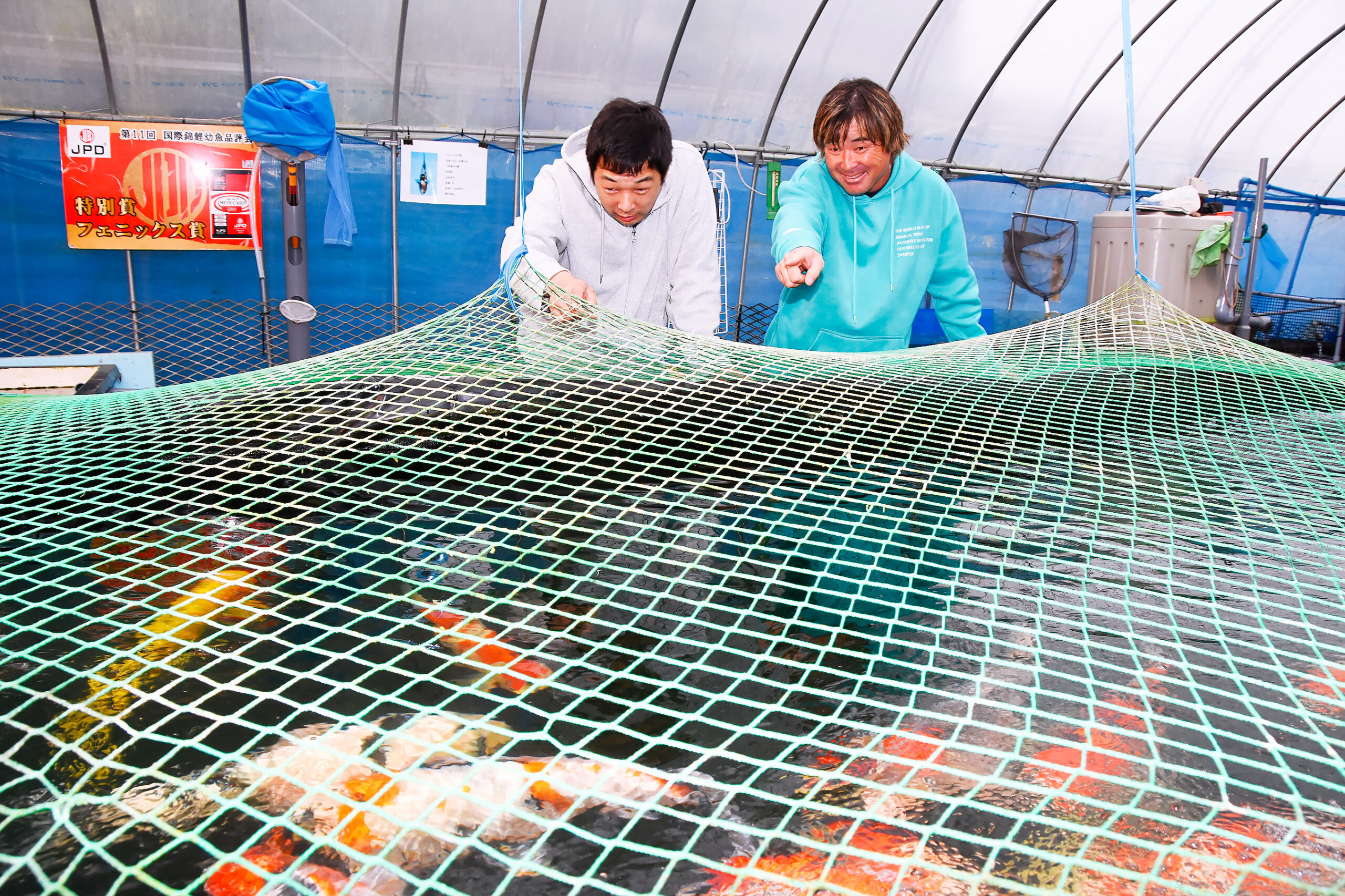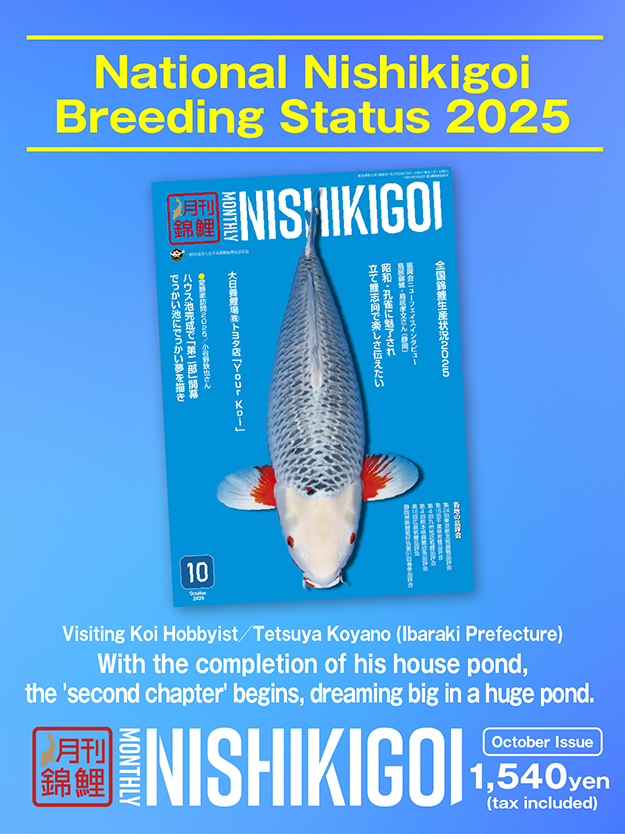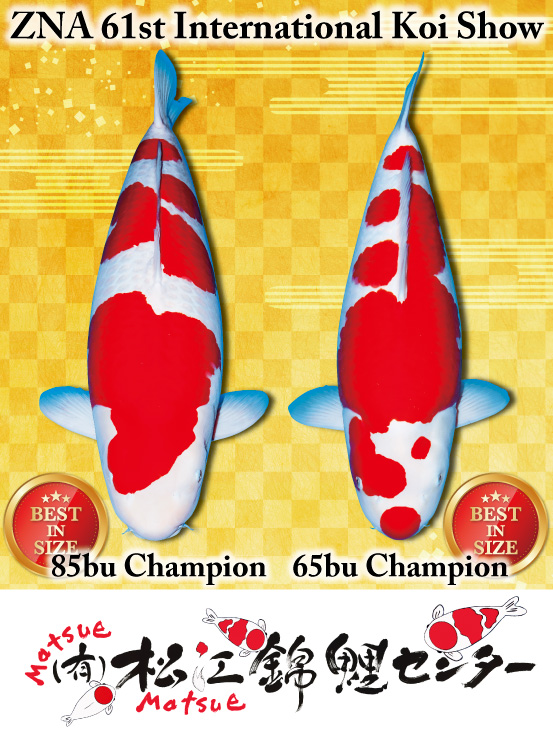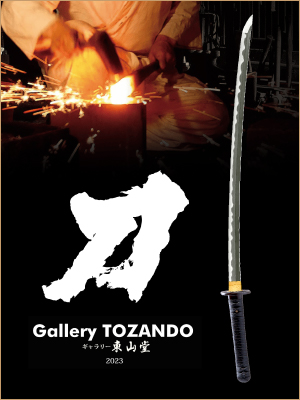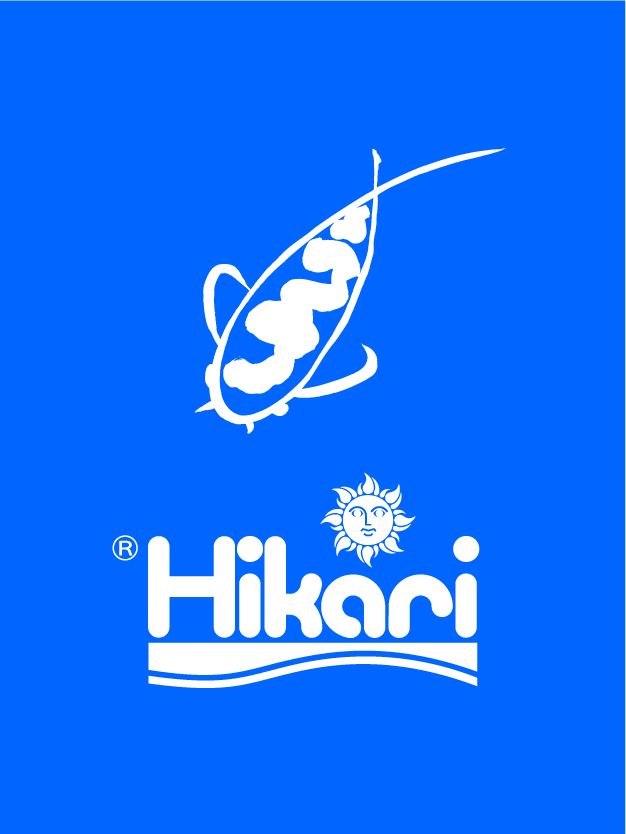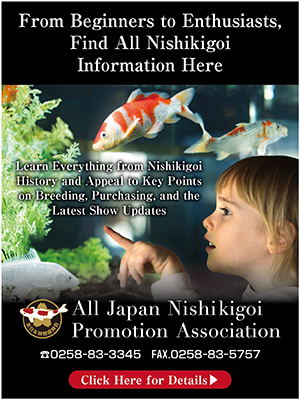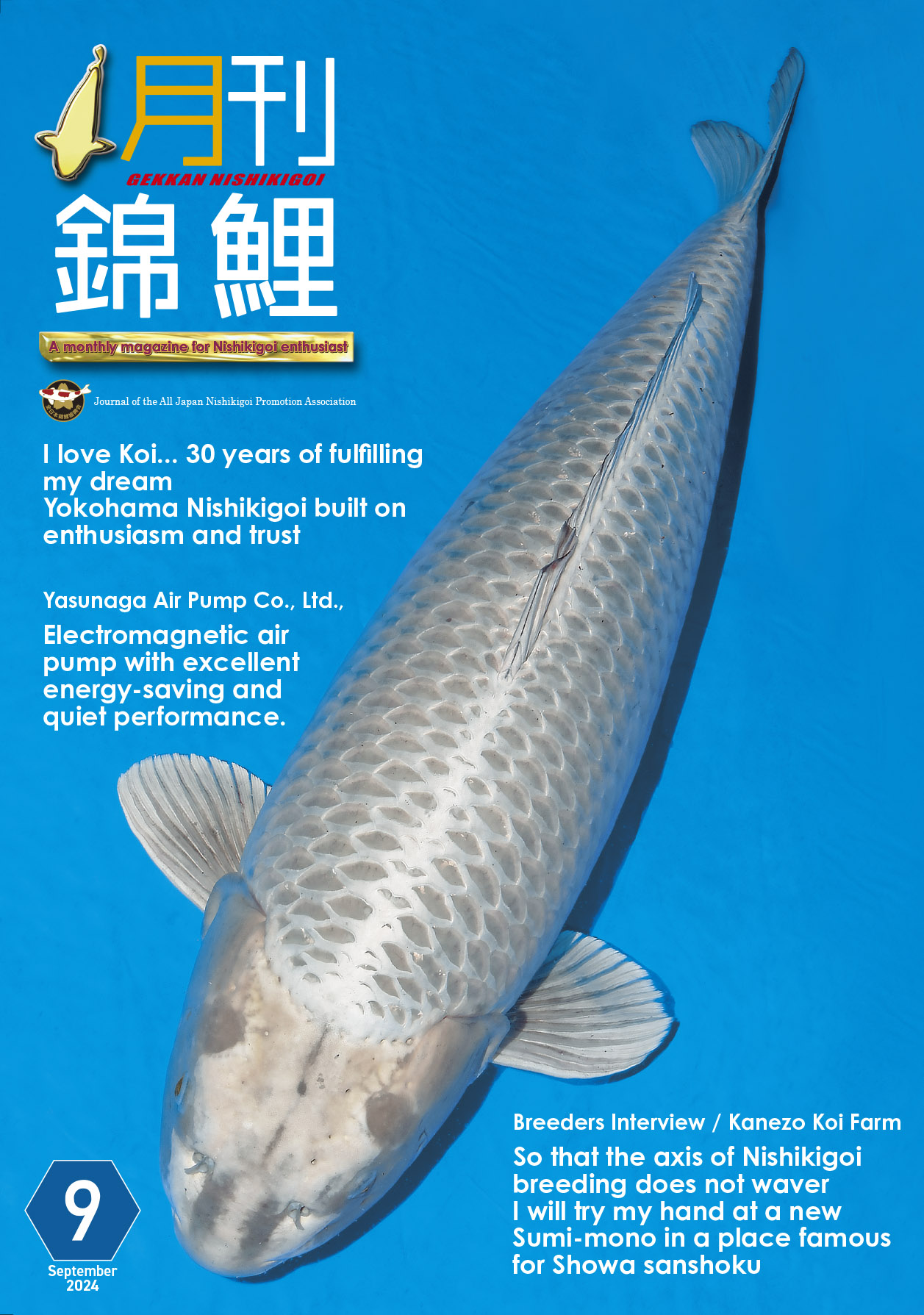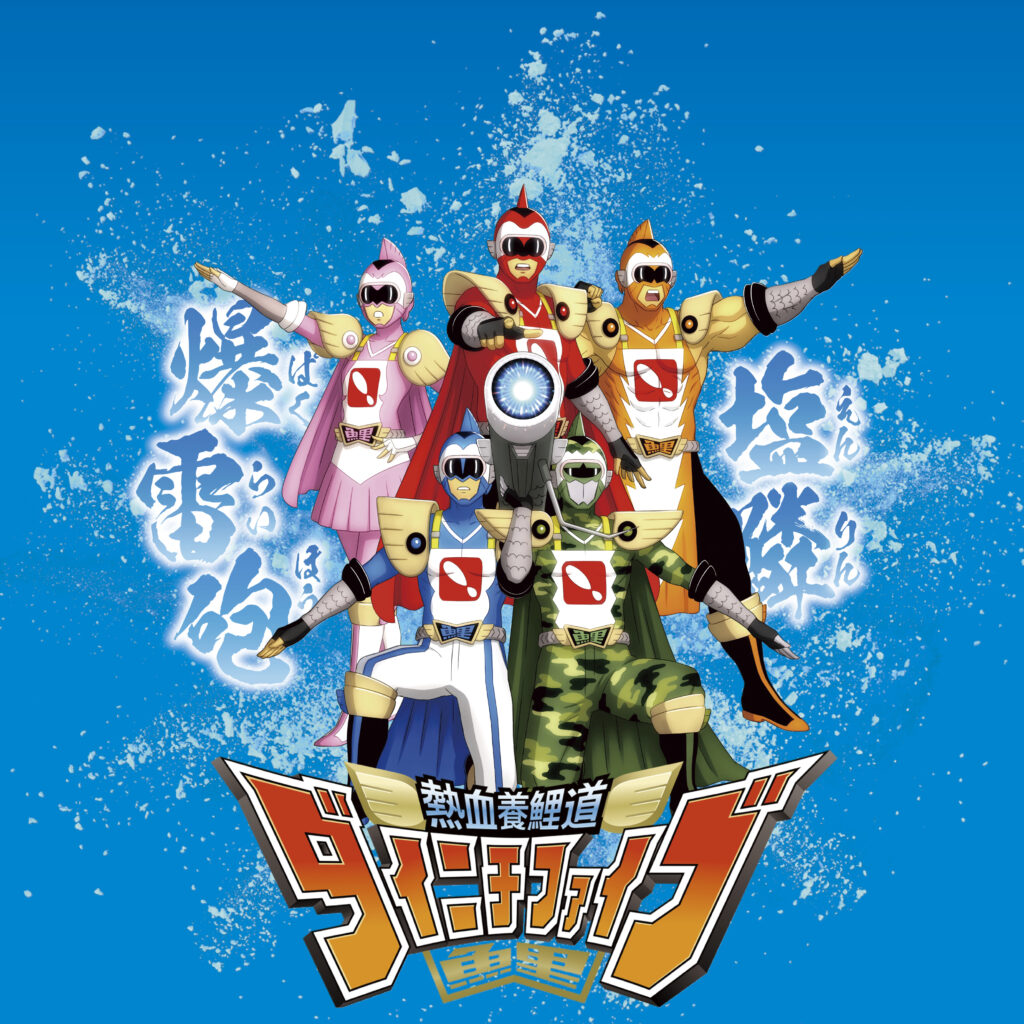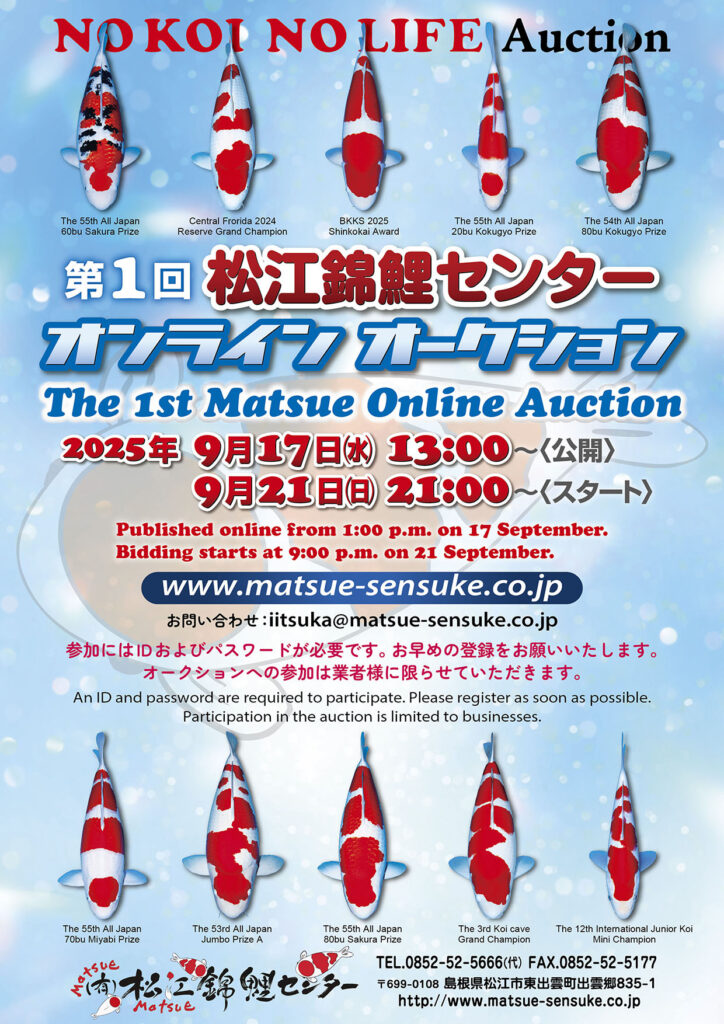Got hooked after seeing “real koi” at a koi farm.
And tanks continued to accumulate in the garage, one after another.
He began seriously keeping Nishikigoi about three years ago, but there had been a pond in his home garden—built by his father—since he was a child. He used to keep goldfish and koi in it, so he had been familiar with fish from an early age.
“Some years after I got married… I started keeping arowana,” Manabu said. “That’s when I discovered how interesting fish keeping could be.”
However, after the birth of his child, he again stepped away from keeping fish for a while. But shortly before he began serious koi keeping, he started keeping goldfish and koi purchased from pet shops which were kept in a 90 cm aquarium embedded in the wall of his garage.
And Manabu explained,”At that time, I did not know anything and often ended up killing the fish. It was just a cycle of them dying and me adding new ones. Looking back now, I realise I was putting fish in immediately that hadn’t previously been affected by sleeping disease, or I didn’t know how to prepare the water properly, so, understandably, they got sick. But back then, I didn’t understand why they were dying, so I searched online. Then, I found many beautiful photos of Nishikigoi. They were completely different from the koi I had bought at the pet shop, and I thought, ‘What is this?'”
Eager to get his hands on some right away, he quickly looked up local koi dealers and called Fujita Fish Farm, the only authorised Nishikigoi association member in Fukushima Prefecture.
“Even though it was my first time, they said, ‘Please feel free to come visit,’ and that got things moving,” Manabu said. “At the pet shop, I was buying koi for around 1,000 yen, but the 500-yen koi at Fujita Fish Farm were way more beautiful.”
After discovering real Nishikigoi at a fish farm and learning how to care for them properly, Manabu quickly found that one tank wasn’t enough. He added another wall-mounted tank and also purchased a 120 cm aquarium. One of the koi he kept early on—a Shusui that won the “Nanohana Award” in the adult division at the Tohoku-Hokkaido Show in autumn 2024—was raised in his original 90 cm tank. Wanting to grow his koi even bigger, he also acquired a 1-ton FRP container that had previously been used at a pickling factory.
“I tend to really get into things,” Manabu said with a laugh. “One tank wasn’t enough, so I added a second… and before I knew it, the garage was packed with tanks, to the point where I couldn’t even park my car,” he chuckled. “So I started moving everything into the greenhouse. Along the way, I learnt about koi shows and made more friends,” he added.
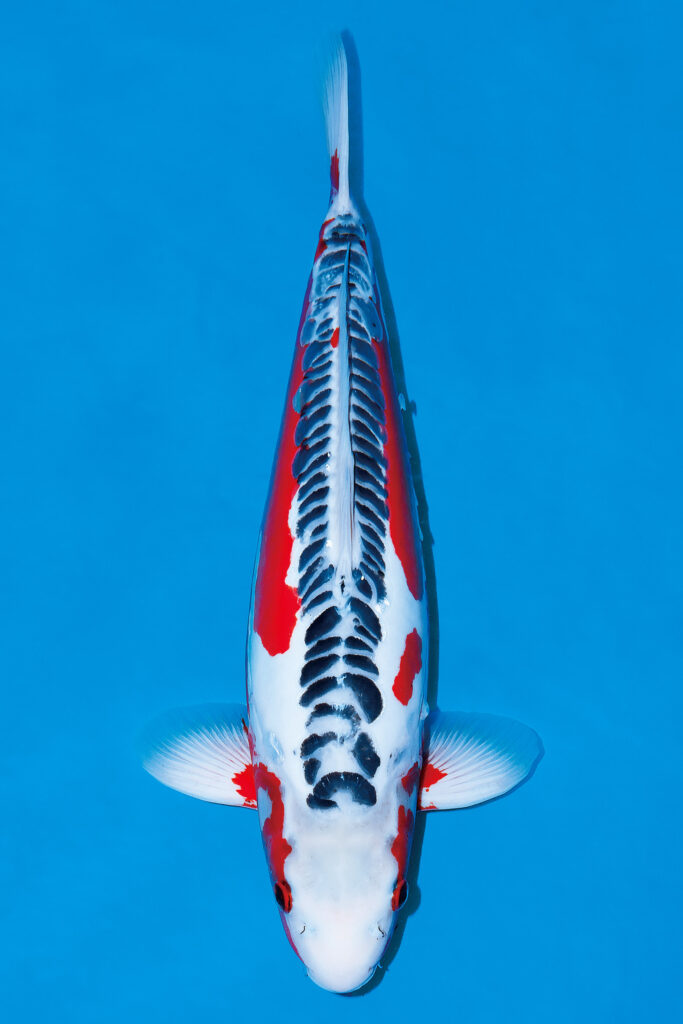
Adult Nanohana Prize
Breeder / Fujita Fish Farm
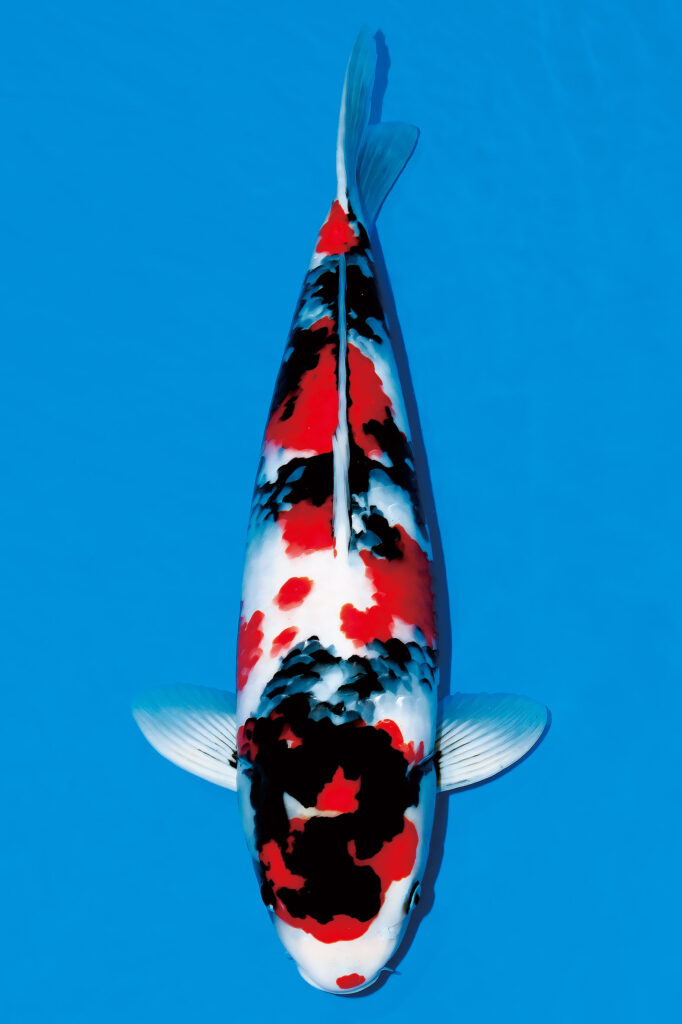
50bu Champion
Breeder / Fujita Fish Farm
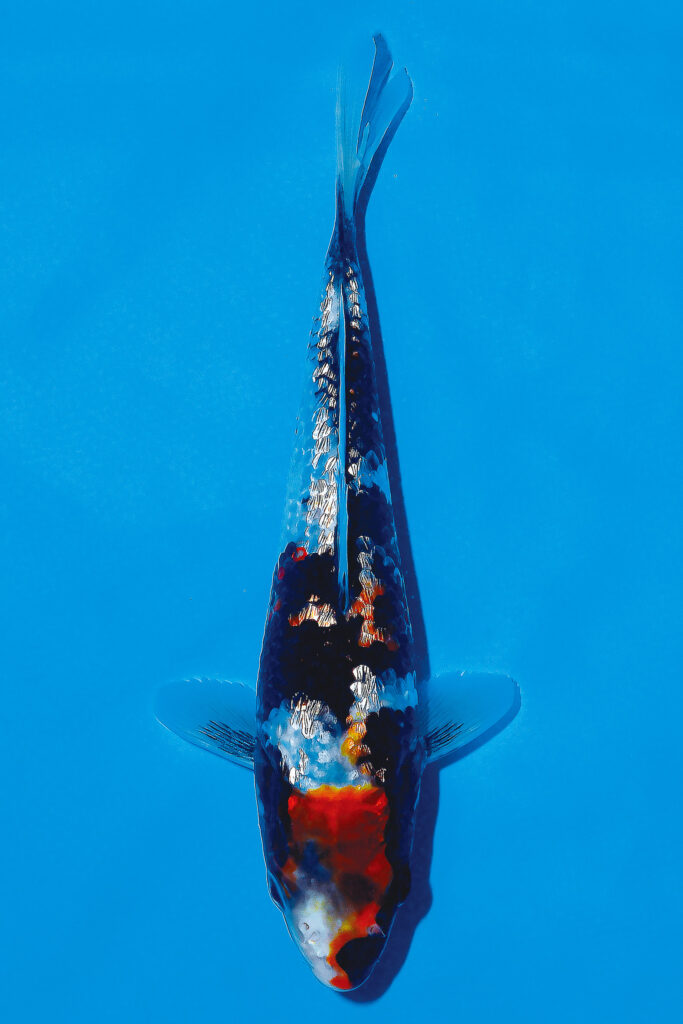
12bu Phoenix Prize
Breeder / Fujita Fish Farm
He had briefly considered digging a pond inside the greenhouse and even asked Hironobu about the pond setup at Fujita Fish Farm. However, budget constraints and some hesitation from his family made the plan challenging to pursue. With his growing enthusiasm for koi, Manabu didn’t want to spend time on lengthy construction. He wanted a pond that could accommodate large koi immediately—so he chose a frame pool instead.
“I think I bought it about two years ago,” Manabu said. “At first, I was thinking of building one myself using steel pipes and a tarp, but the materials alone would have cost quite a bit. While conducting online research, I came across someone keeping koi in an INTEX pool. Ultimately, I believe it was the right choice. Even if it breaks, it’s cheap to repair, and building a large pond would’ve meant sky-high water bills anyway.”
The most significant advantage of a frame pool is its affordability. It also offers a certain level of durability and appears to have no significant drawbacks. However, when it comes to keeping koi, some aspects may feel imperfect. It is something worth considering carefully before making a purchase.
First, there is the issue that the pool cannot drain water from the bottom. The drainage outlet is located about 10 cm above the bottom on the side, making it difficult to completely remove debris that has settled at the bottom. Therefore, it is necessary to create a water flow that effectively directs the dirt toward the filtration tank.
And another issue is the water temperature.
“Since it’s a sheet pool, the air temperature is transmitted directly. That’s why we use a heater in winter, but once it’s turned off, the temperature drops quickly by 5 to 6 degrees Celsius. If you plan to keep koi in an INTEX pool, you need to prepare for the cold weather. Looking back, I think it would have been better to lay Styrofoam down before setting up the pool,” Manabu said.
Even so, thanks to the double-structure greenhouse and the limited use of groundwater, the minimum winter water temperature remains around 13°C, allowing for light feeding. The key point when using frame pools seems to be how to cover these shortcomings.
“There are quite a few alternatives you can find to use as a pond. One thing I’m thinking of fixing up and using now is a children’s FRP pool I recently got… it was used at a kindergarten,” Manabu said.
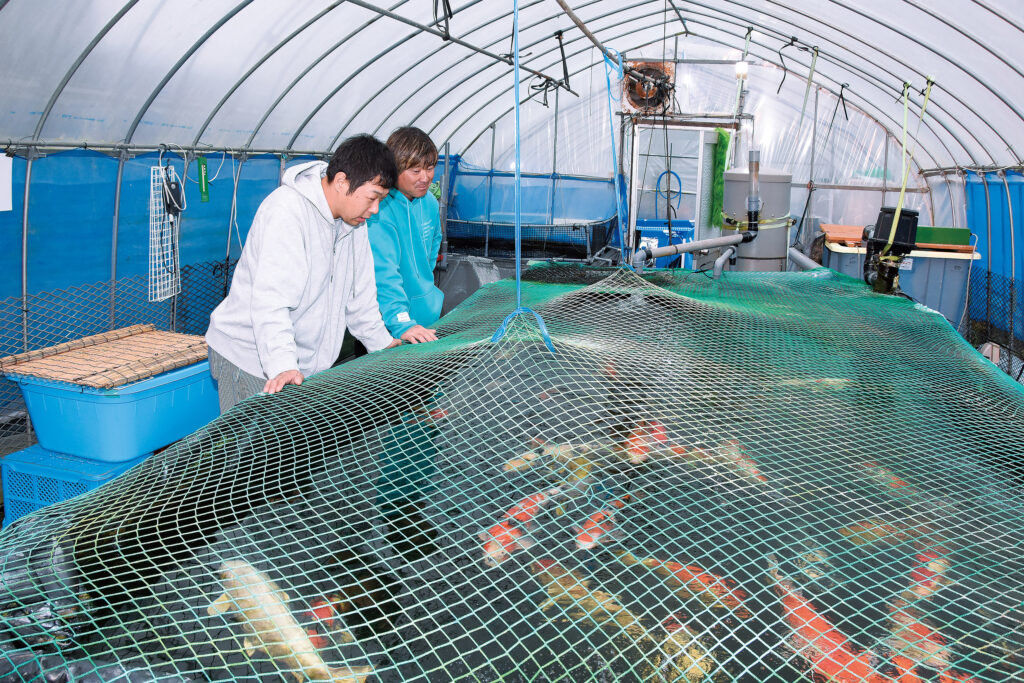
A circle of friends expanded through koi.
Participating in koi shows is something to look forward to.
Manabu acquired the koi that won the Phoenix Award at the International Junior Koi Show during the March sale, before the event. He had been keeping an eye on it since the previous autumn.
“The moment I saw this koi, I was shocked and thought, ‘What is this koi?!’ Among many others, I believed this one was the best. The sale uses a lottery system to determine the order of selecting koi, and luckily, I was near the front, so despite others aiming for it, I was able to buy it. After it won a prize at the International Junior Koi Show, I kept it in my tank, and this year it won first place in 20bu Kawarigoi at the All Japan Combined Nishikigoi Show. It’s interesting because the koi’s appearance changes with each koi show. Right now, it looks like Ochiba,” Manabu said.
No doubt discovering an affordable tank and winning a major award at the All Japan show in just his second year of koi keeping accelerated his passion. However, he says that the presence and support of Fujita Fish Farm played a significant role behind it all.
“At Fujita’s place, I was able to make friends with all kinds of people, and the experienced hobbyists were always willing to teach me. Everyone there is kind, and for me, it’s a healing place—my second home,” Manabu said.
With three years of experience and advice from those around him, his koi keeping has found its stride, and major troubles have become rare. He began entering shows starting with the Tohoku-Hokkaido Regional Show, followed by the International Junior Koi Show, and this year, for the first time, the All Japan Combined Nishikigoi Show. He continues to broaden the scope of his enjoyment.
Manabu goes so far as to say, “I can’t live without koi.” The time he spends after work, quietly watching his koi, is something he wouldn’t trade for anything. While he admits that, ideally, he’d love to have a mud pond or even build a second greenhouse, his top priority for now is to fully enjoy the environment he already has.
“I want to keep koi that I like, regardless of their size,” said Manabu. As he spoke about Nishikigoi, his expression was filled with such contentment that it was almost enviable.

